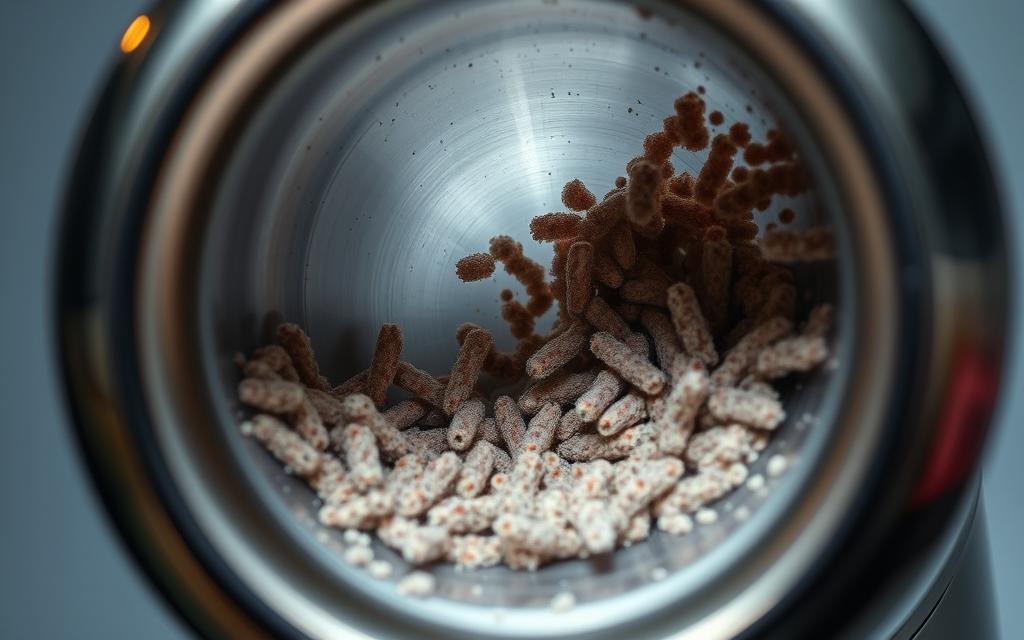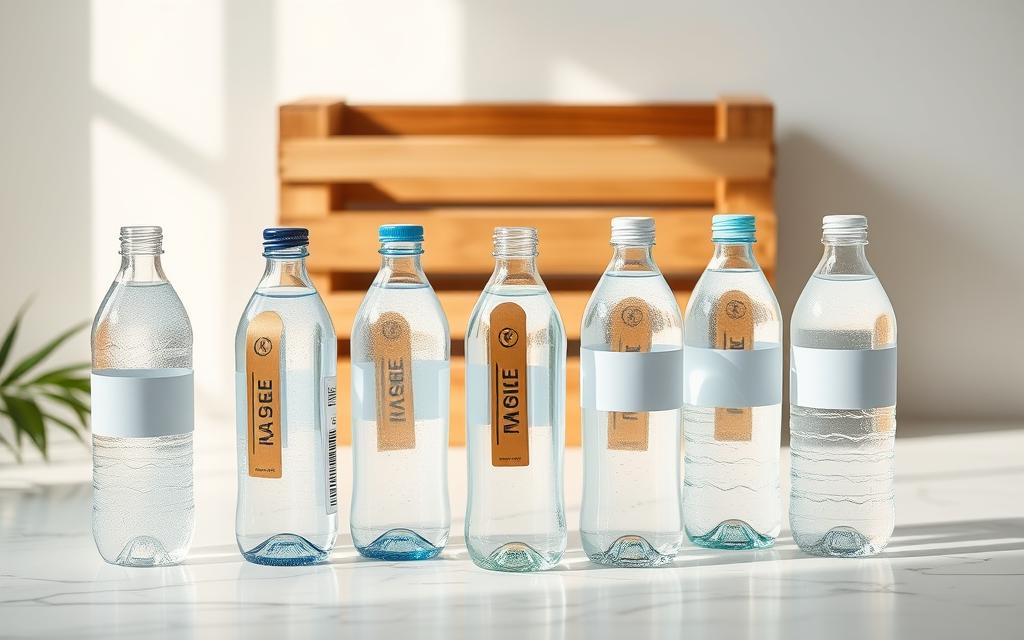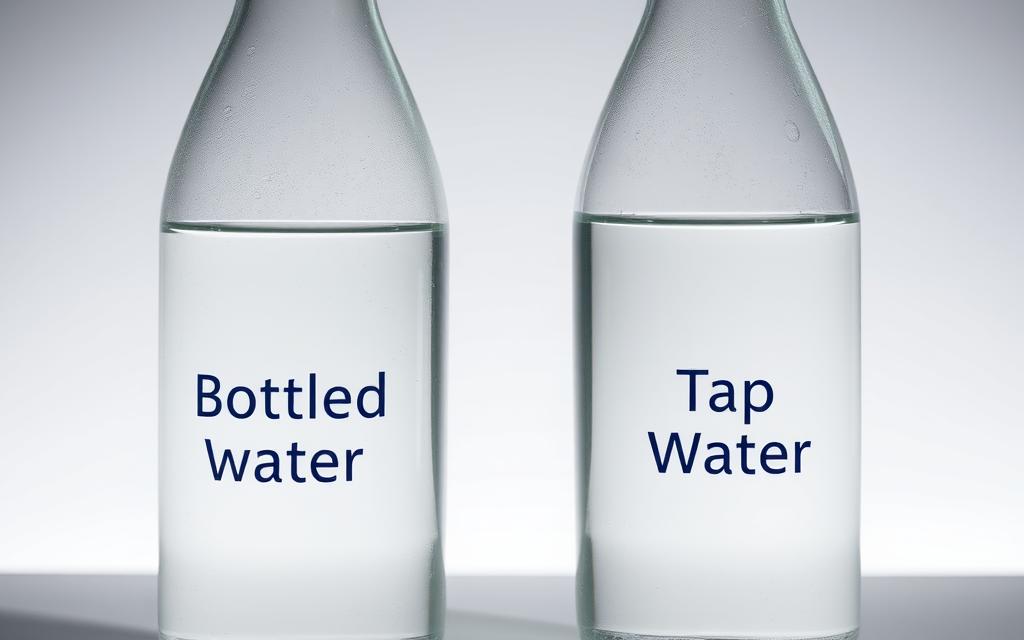Ever thought about bacteria in your stainless steel water bottle? It might surprise you to learn that bacteria can grow in these bottles.
I’ve become more careful about bacterial risks in everyday items. Stainless steel water bottles can be a breeding ground for bacteria. This is a big concern for those who use reusable bottles to stay hydrated.
Research shows that reusable water bottles can have up to 40,000 times more bacteria than a toilet seat. This fact made me want to learn more about how bacteria can grow in what seems like a clean container.
Key Takeaways
- Stainless steel water bottles can potentially harbor bacteria
- Regular cleaning is key to prevent bacterial growth
- Not all bacteria are harmful, but some can be risky
- Moisture and residue increase bacterial contamination chances
- Proper drying is as important as cleaning
Understanding Bacteria and Their Growth
Bacteria are tiny living things that are all around us. Some are good, but others can be harmful, like in water bottles. Knowing about them helps us keep our water bottles clean.

What Are Bacteria?
Bacteria are tiny, single-celled life forms found everywhere. They grow fast when they can. They come in different shapes and sizes. Some are safe, but others can make us sick or dirty water.
Types of Bacteria Commonly Found in Water
- Escherichia coli (E. coli)
- Legionella pneumophila
- Pseudomonas aeruginosa
- Salmonella
Conditions for Bacterial Growth
Bacteria in water bottles need certain things to grow. These include:
| Growth Factor | Description |
|---|---|
| Moisture | Water is perfect for bacteria to multiply |
| Nutrients | Stuff left from drinks helps bacteria grow |
| Temperature | Warmth between 40-140°F makes bacteria grow fast |
| Time | Bacteria can double in 20-30 minutes if it’s right |
To stop bacteria from growing, clean your water bottle often. Good hygiene can really help avoid bacterial problems.
The Nature of Stainless Steel
Stainless steel has changed the game in water bottle design. It offers unique properties that prevent bacteria growth. This makes it a top choice for metal water bottles.
- It has a non-porous surface that prevents bacteria from sticking.
- It’s resistant to corrosion.
- It’s easy to clean and sanitize.
- It has little interaction with liquids.
Why Manufacturers Choose Stainless Steel
Manufacturers love stainless steel for water bottles. It’s durable and keeps things clean. The material’s structure makes it hard for bacteria to grow.
| Property | Bacterial Resistance | Performance Rating |
|---|---|---|
| Surface Smoothness | High resistance | 9/10 |
| Chemical Stability | Minimal bacterial interaction | 8/10 |
| Temperature Tolerance | Limits bacterial survival | 7/10 |
Properties That Prevent Bacterial Growth
Stainless steel contains chromium, which forms a protective layer. This layer naturally inhibits bacterial colonization. It’s hard for bacteria to stick to the bottle’s surface.
Knowing these properties, you can pick a stainless steel water bottle with confidence. It offers extra protection against harmful microorganisms.
How Bacteria Can Contaminate Water Bottles
Stainless steel water bottles are loved for their toughness. But, they can get contaminated by bacteria. Knowing how bacteria get into reusable water bottles helps keep you healthy.
Bacteria can sneak into your water bottle in many ways. Let’s look at the main sources of contamination that might harm your water bottle.
Common Contamination Sources
- Direct mouth contact introduces oral bacteria
- Unwashed hands transferring microorganisms
- Environmental exposure during outdoor activities
- Improper storage and cleaning practices
- Residual moisture creating breeding grounds
Bacterial Survival Mechanisms
Some bacteria are very hard to kill and can live in stainless steel water bottles for a long time. Certain microorganisms thrive in moist environments, making your water bottle a home if not cleaned right.
Studies show bacteria can live from a few hours to days in water bottles. This depends on:
- Ambient temperature
- Moisture levels
- Type of bacteria present
- Nutrient availability
To keep your stainless steel water bottle clean, wash it daily, dry it completely, and deep clean it sometimes. Regular care is essential to keep your water bottle safe for drinking.
Factors Influencing Bacterial Growth in Bottles
It’s important to know what makes bacteria grow in stainless steel water bottles. Not all places are the same when it comes to bacteria. Several factors can greatly affect if bacteria can grow in these bottles.
Temperature’s Critical Role
Keeping the right temperature is key to stopping bacteria in stainless steel bottles. Bacteria love warm places and grow fast when it’s hot. Here are some important temperature facts:
- Temperatures between 40°F and 140°F are perfect for bacteria to grow
- Leaving bottles in hot cars can make bacteria grow faster
- Cool, dry places slow down bacteria growth a lot
Impact of Drink Residues
Can bacteria grow in stainless steel water bottles? It often depends on what’s left in the bottle. Drinks with sugar and protein are like a feast for bacteria.
| Drink Type | Bacterial Growth Potentia | Cleaning Difficulty |
|---|---|---|
| Sugary Drinks | High | Moderate |
| Protein Shakes | Very High | Difficult |
| Water | Low | Easy |
Cleaning your bottle well and rinsing it right after use can lower the risk of bacteria.
Cleaning Your Stainless Steel Water Bottle
Keeping your stainless steel water bottle clean is key to stopping bacteria growth. It also makes sure your water is safe to drink. Here are some top tips for cleaning your bottle to keep it in great shape.
Essential Cleaning Practices
I’ve found a simple cleaning routine that keeps my bottle spotless. The secret is to be consistent and use the right methods.
- Rinse your bottle daily with hot water
- Use mild dish soap for regular cleaning
- Scrub hard-to-reach areas with a bottle brush
- Dry completely after each wash
Recommended Cleaning Products
Choosing the right cleaning products is vital. Here are some top picks:
| Cleaning Product | Effectiveness | Frequency |
|---|---|---|
| White Vinegar Solution | Excellent Natural Disinfectant | Weekly |
| Baking Soda Paste | Deep Cleaning | Bi-weekly |
| Specialized Bottle Cleaning Tablets | Convenient Sanitization | Monthly |
Pro tip: Stay away from harsh chemicals and rough cleaners. They can harm your bottle. A soft touch is best for keeping it clean and safe.
By sticking to these cleaning tips, you’ll stop bacteria in their tracks. Your stainless steel water bottle will stay in top condition.
Signs Your Water Bottle May Be Contaminated
It’s important to keep your stainless steel water bottle clean. Bacteria can grow without you noticing. This guide will help you spot contamination early and stay healthy.
Visible Bacterial Warning Signs
Spotting bacteria growth needs careful eyes. To keep your bottle clean, watch for these signs:
- Cloudy or discolored interior surface
- Slimy film around bottle edges
- Unusual residue or spots
- Visible mold growth
Sensory Changes Indicating Contamination
Your senses can warn you of hidden bacteria. Look out for these subtle clues:
| Sensory Indicator | Potential Bacterial Sign |
|---|---|
| Unusual metallic taste | Potential bacterial biofilm |
| Musty or stale odor | Bacterial growth |
| Unexpected aftertaste | Contamination development |
If you see these signs, clean or replace your bottle. Trust your instincts and maintain rigorous hygiene practices.
Myths About Bacteria in Stainless Steel
Stainless steel water bottles are popular, but myths about bacteria growth exist. Knowing the truth about bacteria in these bottles helps keep them clean. This knowledge helps you choose the right drinking containers.
Debunking Common Misconceptions
Many think stainless steel water bottles are completely bacteria-free. But, they are not completely safe from bacteria. Yes, bacteria can grow in these bottles under the right conditions.
- Myth: Stainless steel automatically prevents bacteria growth
Reality: Regular cleaning is essential to prevent bacterial buildup
- Myth: One rinse is enough to clean a water bottle
Reality: Thorough cleaning with appropriate methods is key
- Myth: Bacteria cannot survive on stainless steel surfaces
Reality: Bacteria can survive if hygiene is not kept up
Understanding Stainless Steel’s Hygiene Properties
Stainless steel has natural properties that fight bacteria. Its smooth surface makes it hard for bacteria to stick. Proper cleaning and maintenance are key to preventing bacterial contamination in your water bottle.
Remember: No material is 100% bacteria-proof without proper care and cleaning.
By knowing the myths and truths about bacteria in stainless steel water bottles, you can keep your bottle clean and safe. This knowledge helps you make better choices for your drinking containers.
Benefits of Using Stainless Steel Bottles
Stainless steel water bottles are a big step for those who care about the planet. They are more than just a place to carry water. They offer many benefits that help us stay healthy and protect the environment.
Using stainless steel water bottles has many perks. They keep us safe and help our planet. Let’s look at the main benefits of these amazing bottles.
Environmental Impact
Stainless steel water bottles are good for the environment. They have many eco-friendly features:
- 100% recyclable material
- Dramatically reduces single-use plastic waste
- Extremely durable with long-lasting performance
- Minimal carbon footprint compared to plastic alternatives
Health Considerations
Stainless steel bottles are clean and safe. They have health benefits:
| Health Benefit | Description |
|---|---|
| Non-toxic Material | Does not leach harmful chemicals |
| Corrosion Resistance | Prevents metal contamination |
| Easy to Clean | Smooth surface inhibits bacterial buildup |
“Choosing stainless steel is an investment in personal and environmental wellness.” – Environmental Health Experts
By choosing stainless steel, I’m making a smart choice. It’s good for my health and the planet.
How Often Should I Clean My Water Bottle?
Keeping your stainless steel water bottle clean is key for your health and its life span. Regular cleaning stops bacteria from growing. This keeps your bottle fresh and safe.
Experts say to clean your bottle often but not too much. You need a mix of daily care and deep cleaning.
Daily Cleaning Routine
Every day, give your bottle a quick clean. Here’s how:
- Rinse with warm water after each use
- Use mild dish soap for thorough cleaning
- Dry completely with a clean towel
Factors Affecting Cleaning Frequency
Some things might make you need to clean your bottle more:
- Beverage type: Drinks like sugary or protein-based ones need quick cleaning
- Outdoor activities or intense exercise
- Storing the bottle in warm environments
| Cleaning Frequency | Recommended Action |
|---|---|
| Daily | Rinse and quick wash |
| Weekly | Deep clean with bottle brush |
| Monthly | Sanitize with vinegar or specialized cleaner |
By following these tips, you’ll keep your bottle clean and safe for every day.
Alternatives to Stainless Steel Bottles
Stainless steel isn’t the only choice for reusable water bottles. Other materials have their own benefits and challenges. Let’s look at some alternatives that might be right for you.
Plastic Bottles: Convenience with Caution
Plastic water bottles have both good and bad sides. They are light and cheap, but you need to pick them carefully.
- Pros of Plastic Bottles:
- Lightweight design
- Inexpensive
- Wide variety of styles
- Cons of Plastic Bottles:
- Potential chemical leaching
- Higher bacteria retention
- Less durable than stainless steel
Glass Bottles: A Clear Alternative
Glass bottles are a good choice for those worried about bacteria. They are clear and have a smooth surface, making them easy to clean.
| Feature | Glass Bottles | Stainless Steel Bottles |
|---|---|---|
| Bacteria Resistance | Smooth surface, easy to clean | Non-porous material |
| Durability | Fragile, requires careful handling | Highly durable |
| Weight | Heavier | Lightweight |
Each bottle type has its own way of dealing with bacteria. Your choice depends on what you like, your lifestyle, and how much you care about staying clean.
Conclusion: Keeping My Water Bottles Safe from Bacteria
Keeping your stainless steel water bottle clean is more than a task—it’s a health commitment. We’ve learned important ways to stop bacteria in these bottles. This can change how you drink water every day.
From my own experience, simple habits are very effective. Washing it often, drying it well, and storing it right are key. These steps help a lot in keeping your bottle safe and clean.
Staying on top of your water bottle’s cleanliness is easy. Just wash it daily, deep clean it weekly, and check it regularly. This way, you can avoid harmful germs.
Your health is worth the effort. By following these tips, your stainless steel water bottle will stay clean and safe for you to use. Enjoy drinking from it for many years.



